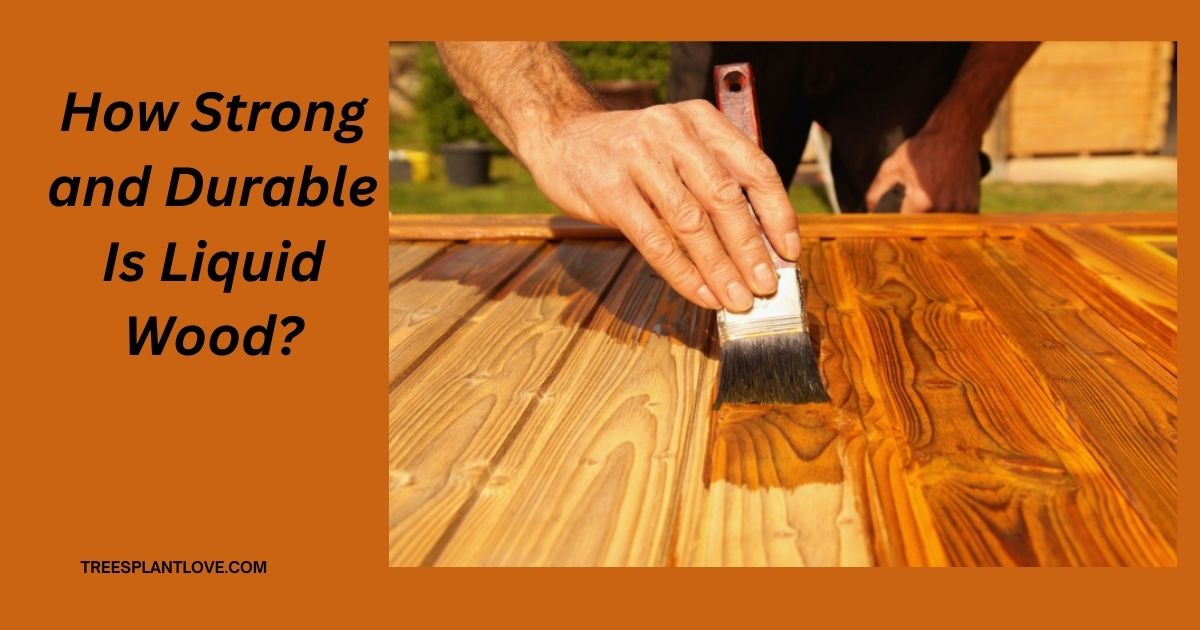
How Strong and Durable Is Liquid Wood? Exploring Its Strength and Long-Term Performance
How Strong and Durable Is Liquid Wood?: As sustainability and innovation continue to shape industries around the world, new materials are emerging that promise to revolutionize manufacturing, construction, and even design. One such material that has caught the attention of engineers and environmentalists alike is liquid wood.
Derived from renewable resources and designed as an eco-friendly alternative to traditional plastics and synthetic materials, liquid wood holds great promise. But how strong and durable is liquid wood? In this article, we will explore the properties of liquid wood, its strengths, and how it stands up to wear and tear compared to conventional materials.
What Is Liquid Wood?
Liquid wood, also known as Arboform, is a biodegradable composite material made from lignin, a natural polymer found in the cell walls of plants and trees. Lignin is one of the most abundant organic materials on Earth, and when processed, it can be transformed into a resin-like liquid that can be molded into various shapes and products. The key difference between liquid wood and conventional plastics is its natural, sustainable composition.
The material is not only eco-friendly but also versatile, offering potential applications in furniture, automotive components, packaging, and even construction. Liquid wood has been lauded for its ability to mimic the properties of traditional wood while eliminating the need for trees to be cut down for production.
How Strong Is Liquid Wood?
The strength of a material is typically measured by its resistance to deformation, wear, and external forces. When it comes to liquid wood, it has shown impressive strength in a variety of applications.
- Mechanical Strength
Liquid wood has demonstrated mechanical properties similar to those of thermoplastics and even some metals. The strength of liquid wood can be tailored by adjusting its composition during production. For example, the addition of various reinforcing agents can improve its strength, making it suitable for use in applications that require robust materials, such as automotive parts or structural components in buildings.
Tests have shown that liquid wood can withstand high pressure, impact, and bending without easily breaking or cracking. Its inherent rigidity makes it a viable option for a range of uses where traditional plastics or metals might otherwise be employed.
- Impact Resistance
Unlike brittle materials, liquid wood has a high level of impact resistance. This is particularly valuable in products that need to endure sudden forces or drops, such as in the production of durable consumer goods. The resilience of liquid wood in the face of impact allows it to be used in everything from high-end furniture to packaging materials that protect fragile items. - Weight-to-Strength Ratio
One of the standout features of liquid wood is its favorable weight-to-strength ratio. It is lightweight, which is important in industries like automotive and aerospace, but it does not sacrifice strength. This balance makes liquid wood an attractive option for producing lightweight components that still need to endure heavy loads or significant stress over time.
How Durable Is Liquid Wood?
Durability refers to how well a material can withstand wear, weathering, and other environmental factors over time. When it comes to liquid wood,its durability makes it suitable for long-term use in a variety of industries.
- Weather Resistance
Because liquid wood is made from lignin, it has natural resistance to water absorption. Unlike traditional wood, which can warp or rot over time when exposed to moisture, liquid wood is highly resistant to water and other environmental elements, including UV rays from sunlight. This makes it a viable alternative for outdoor furniture, decking, and building materials where exposure to the elements is a concern. - Scratch and Abrasion Resistance
Liquid wood’s surface is resistant to scratches and abrasion, which enhances its durability in high-use applications. For example, products such as tabletops or countertops made from liquid wood can endure everyday wear and tear while maintaining their aesthetic appeal. This resistance to scratches and scuffs makes it a practical material for products that require longevity and appearance retention. - Biodegradability and Longevity
One of the key advantages of liquid wood is that it is biodegradable. While this makes it a more environmentally friendly option than synthetic materials, it also means that liquid wood will eventually break down over time, particularly in outdoor environments or after prolonged exposure to moisture. However, when used in controlled environments where moisture exposure is minimized (such as in indoor furniture or automotive parts), liquid wood can last for many years, providing a durable solution with a lower environmental impact. - Thermal Stability
Another important aspect of durability is a material’s performance under varying temperatures. Liquid wood can tolerate a wide range of temperatures, from cold to hot, without compromising its structural integrity. This makes it suitable for use in different climates and environments where temperature fluctuations are common.
How Does Liquid Wood Compare to Other Materials?
While liquid wood is a promising material, it’s important to compare its strength and durability to more traditional materials like wood, plastic, and metal:
- Liquid Wood vs. Traditional Wood: Liquid wood offers many of the aesthetic and structural benefits of real wood but with greater durability. Unlike wood, it is less susceptible to moisture damage, rot, and warping. It also offers a more uniform texture, which can be desirable in some applications.
- Liquid Wood vs. Plastic: Liquid wood is often seen as a more sustainable alternative to plastic, as it is biodegradable and made from renewable resources. While plastic may be stronger in certain contexts, liquid wood has an advantage in terms of environmental impact and can offer similar mechanical strength and durability in many applications.
- Liquid Wood vs. Metal: Although liquid wood is strong, it does not match the tensile strength or hardness of metals like steel or aluminum. However, liquid wood can still be a viable option for parts that don’t require the extreme strength of metal but do need the benefit of a lighter weight and better environmental profile.
Conclusion
Liquid woodis a material that is not only strong and durable but also offers a sustainable, eco-friendly alternative to many traditional materials. With impressive mechanical strength, high impact resistance, weather resilience, and biodegradability, liquid wood is well-suited for a wide range of applications. Whether it’s used for furniture, automotive components, or building materials, liquid wood holds great promise as a durable, environmentally conscious material for the future.
As industries continue to seek out sustainable solutions, liquid wood could become a cornerstone of green innovation, providing strong, durable, and eco-friendly alternatives to conventional plastics and metals. With ongoing advancements in its development and wider adoption across industries, the future of liquid wood looks bright—offering a perfect blend of strength, durability, and sustainability.

Leave a Reply